Reducing the file size allows you to store more images on your disk or hosting, significantly reducing the time needed to send them over the Internet. Plus, it often happens that some sites have a limit on the size of the file you can upload.
Some image editors come with built-in compression tools. However, in my experience, online services are often the best option, as they have been specifically designed for this purpose and are cross-platform, allowing you to use them on both your computer and phone. In this article, we'll look at the best of them!
TinyPNG
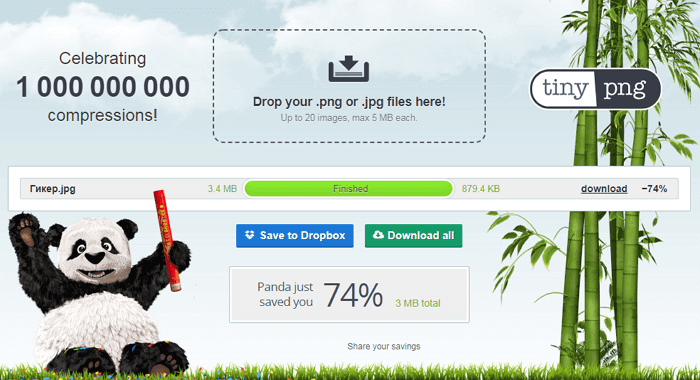
TinyPNG — is probably the most useful and easy-to-use online image compression service that can handle up to 20 photos at a time. However, the maximum size of each file should not exceed 5 MB. In terms of formats, it only supports PNG or JPG.
How to use it? Just drag and drop your photos into the upload area! The service will then compress them and provide a link to download or save to your Dropbox account.
Compress Now
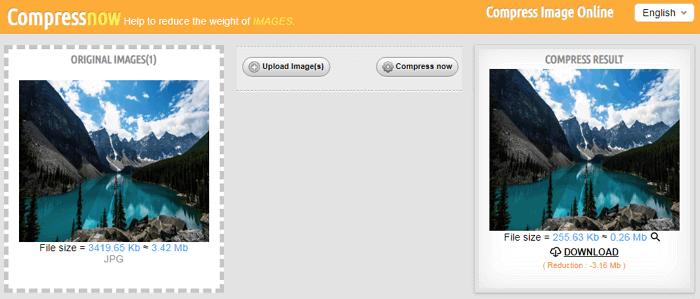
CompressNow, seems to be the fastest tool in this review. It can compress multiple images within a second. You can upload multiple photos at once, but the maximum file size is 9 MB. You can use a variety of formats, including JPG, JPEG, PNG, and GIF.
Being a smart tool, it shows a panel that can be used to change the compression level. If you set it to 50%, there is no loss of quality at all, but the file size is reduced by 3.5 times. At 90% compression, it is reduced by 13 times, but the compression is quite noticeable, although not critical.
Tool
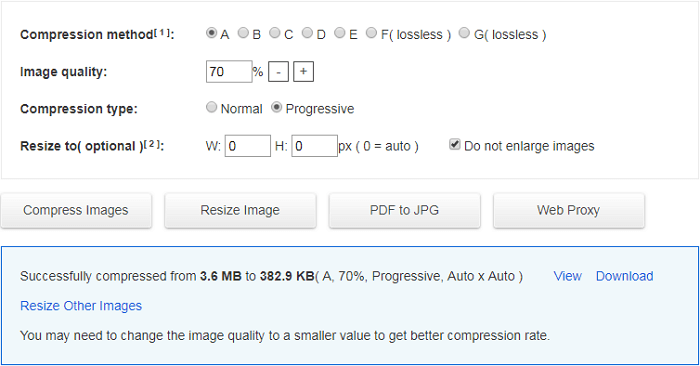
The advantage of Toolur.com is that you can upload up to 25 images at a time, but each file should not be larger than 30 MB. The service has different compression levels, some of which may degrade quality, so you need to choose wisely. For maximum effect, use method A. Supported formats include PNG, JPEG, and BMP. All files will be automatically deleted from the server after 1 hour.
Methods A through E are lossy compression and conversion to JPEG. Note that converting graphic files from other formats (e.g. PNG, BMP) to JPEG will result in a decrease in quality. However, processing an existing JPEG image with methods F and G does not affect the pixel aspect ratio, which allows for a reduction in size without loss of quality.
Lossless methods F and G can be implemented only if the width and height of the image are preserved. To ensure that the original quality of the graphics is not degraded, leave these parameters unchanged by setting the W and H fields to zero.
Optimizilla
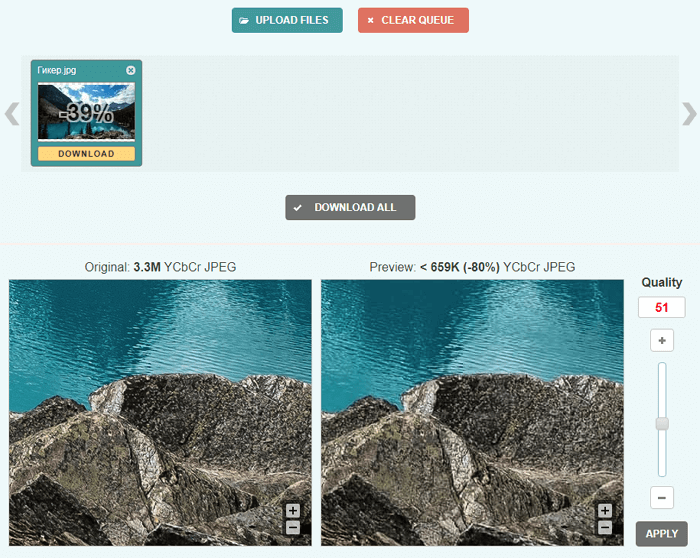
If you have a lot of images, we can recommend the service Optimizilla, which allows you to upload 20 files at a time. Once the files are queued for processing, you can click on their thumbnails to set the desired quality criteria. It is possible to upload different formats at the same time, but only two - PNG and JPEG.
Once the process is complete, you'll see a side-by-side comparison of the original and optimized images. You can zoom in or out to examine both versions more closely and adjust the quality settings on the scale on the right.
Kraken
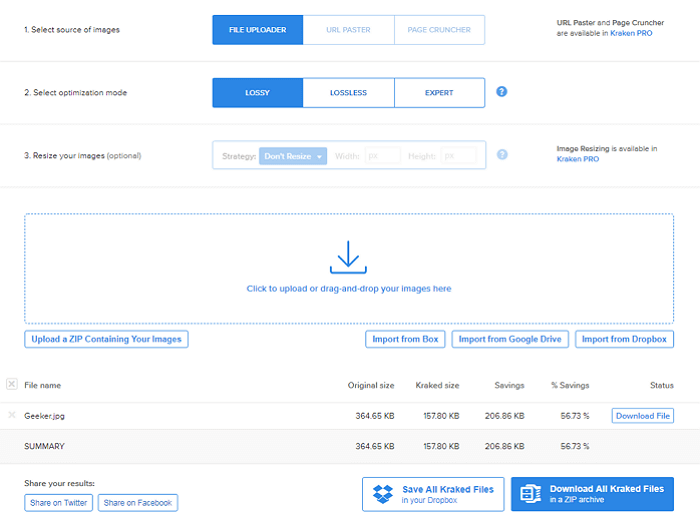
Kraken.io – a freemium tool worth considering if you're serious about image optimization and are willing to pay a small fee later to access advanced options and get the best results.
With the help of free functionality you can upload individual files or ZIP archives up to 1 MB from your personal computer or from cloud storage. Optimization involves the use of one of three modern compression methods: Lossy, Lossless or with customizable parameters.
The free version of Kraken.io works quite well, but if that's not enough, upgrade to the premium plan, which costs just $5 per month. It will allow you to handle larger files and add more features, such as photo cropping, API access, WordPress plugin, and more.
In addition to your computer or mobile device, you can select images from other sources, such as Box, Google Drive, Dropbox.
Compressor.io

Compressor.io is a fantastic tool that has a distinct advantage over TinyPNG because it can optimize not only PNG and JPEG files, but also GIF and SVG.
The service uses lossy and lossless high compression technologies, which allows you to reduce the size of photos by up to 90 percent. The only drawback of this service is the lack of a bulk upload function.
If your image is in a format other than the standard JPEG or PNG (such as GIF or SVG), this tool is useful. There is a 10MB file size limit, and you can only upload one file at a time. Once the compression is complete, you can see the difference on the screen, but you probably won't be able to tell the difference between the original and the final result.